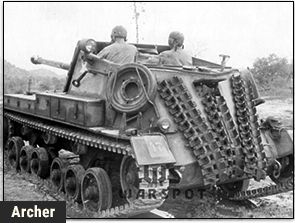Warspot.net is where history comes alive!
The dedicated site features articles about various aspects of military history and technology for readers of all interest levels.
Our authors include specialists who put a lot of effort into their articles. They tell you about little-known military conflicts, development and use of military vehicles, creation of iconic weapons, outstanding engineers, tactics of renowned commanders, heroic deeds of ordinary soldiers, and more.
Here is the Warspot Digest for August 2021—all this and more on Warspot.net!
Warspot Digest: August 2021
 |
In Search of an Ideal Weapon [READ MORE] The poor results of the Heavy Tank M6 program led to a lethargy in American heavy tank development by the first half of 1944. The success of American medium tanks in North Africa led the American military to believe that they will not need heavy tanks. The summer of 1944 in Normandy proved sobering. It turned out that the Germans had new types of heavy tanks that were a tough nut to crack for American tanks and tank destroyers. As a result, development of several new heavy tanks was expedited in late July of 1944. The Heavy Tank T30 and Heavy Tank T34 were among them. |
 |
Comet, the Last Cruiser [READ MORE] The stagnation of British tank building in the 1930s cost the country dearly in WWII. Nearly the entire war was spent playing catch-up. There were some minor successes such as the Matilda tank, but the most common type of tank was the cruiser. Having started the war with tanks that had similar characteristics to the Soviet BT-7 tank, British tankers continued to receive new vehicles that were half a step behind their German counterparts. The British only received a tank that had more or less caught up to the enemy towards the end of the war. This was the Comet, the last cruiser tank put into mass production. |
 |
Pz.Kpfw.II Ausf.J: Heavy Steps of a Light Tank [READ MORE] Rather unusual types of vehicles frequently appeared in WWII. Most of them remained on paper, but some of them made it to production. German tank builders were no exception, creating vehicles whose mere concept boggles the mind. The VK 16.01, otherwise known as the Pz.Kpfw. II Ausf. J was one such vehicle. It was not as useless as its brother, the Pz.Kpfw.I Ausf. F, but the concept of a lightly armoured heavy tank raises many questions. |
 |
Backwards Tank Destroyer [READ MORE] British industry was one of the first to create the concept of an SPG, but did not have much success with these vehicles in WWII. Aside from Challenger and Avenger tank destroyers and Crusader AA SPAAGs the British did not have much to offer when it came to SPGs. There were only two others that saw battle: the Bishop and Archer. The latter actually turned out quite well, despite its unusual configuration. |
 |
S-51: High Caliber Convertibles [READ MORE] History often repeats itself. This well known fact is often confirmed in tank building. For instance, Soviet SPGs, especially heavy ones like the SU-14, were created in order to mechanize artillery. The requirements changed during the process of their creation. The Red Army was in need of an assault gun that was capable of direct fire and had shell-proof armour. The 212 SPG and subsequent vehicles were designed according to this concept. Work resulted in the creation of the SU-152. However, one day the Red Army once more found itself in need of a self propelled gun with an open fighting compartment equipped with a 203 mm B-4 gun. |
| ABOUT WARSPOT.NET | BECOME AN AUTHOR |
